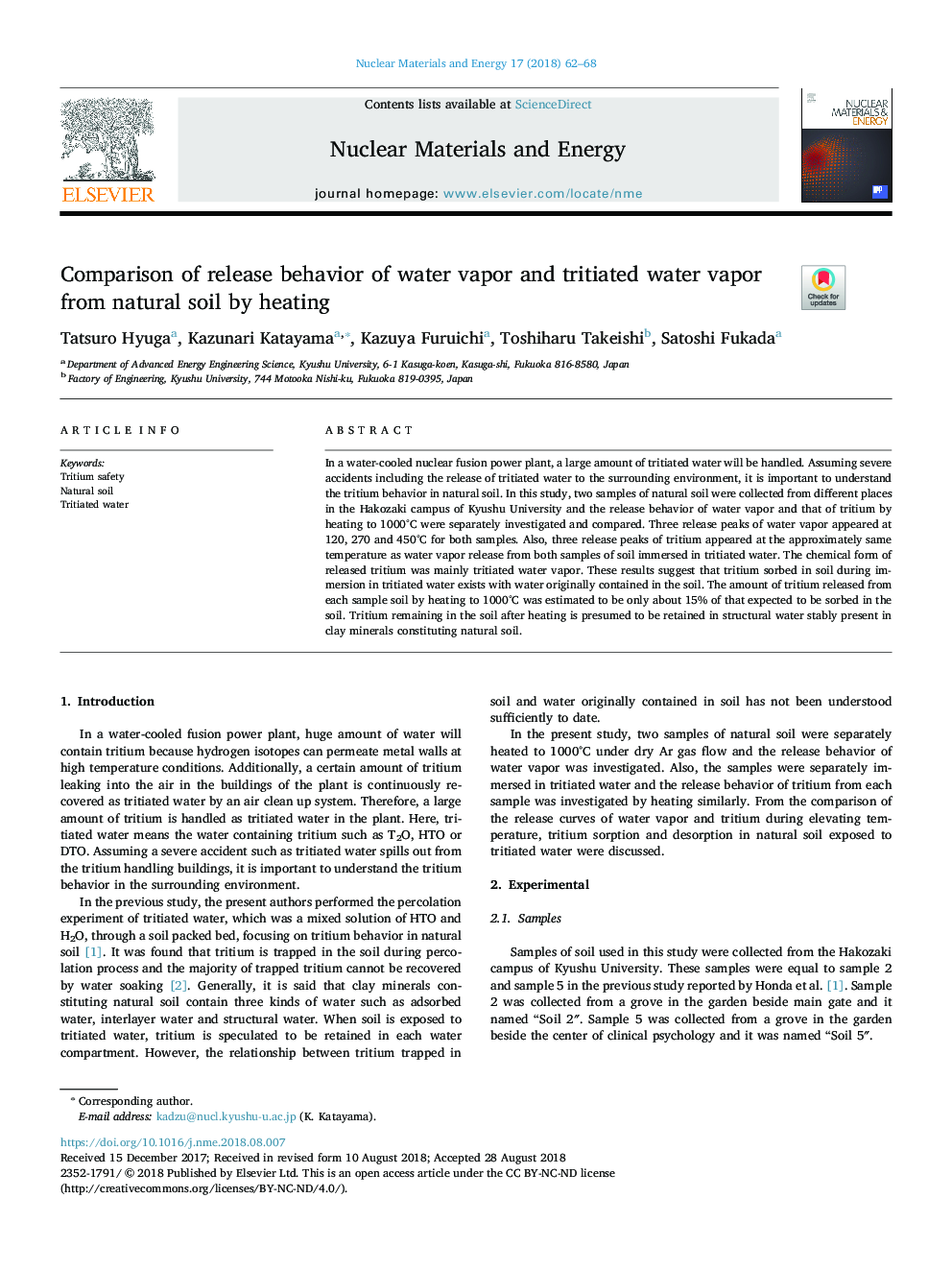| Article ID | Journal | Published Year | Pages | File Type |
|---|---|---|---|---|
| 9953545 | Nuclear Materials and Energy | 2018 | 7 Pages |
Abstract
In a water-cooled nuclear fusion power plant, a large amount of tritiated water will be handled. Assuming severe accidents including the release of tritiated water to the surrounding environment, it is important to understand the tritium behavior in natural soil. In this study, two samples of natural soil were collected from different places in the Hakozaki campus of Kyushu University and the release behavior of water vapor and that of tritium by heating to 1000°C were separately investigated and compared. Three release peaks of water vapor appeared at 120, 270 and 450°C for both samples. Also, three release peaks of tritium appeared at the approximately same temperature as water vapor release from both samples of soil immersed in tritiated water. The chemical form of released tritium was mainly tritiated water vapor. These results suggest that tritium sorbed in soil during immersion in tritiated water exists with water originally contained in the soil. The amount of tritium released from each sample soil by heating to 1000°C was estimated to be only about 15% of that expected to be sorbed in the soil. Tritium remaining in the soil after heating is presumed to be retained in structural water stably present in clay minerals constituting natural soil.
Keywords
Related Topics
Physical Sciences and Engineering
Energy
Nuclear Energy and Engineering
Authors
Tatsuro Hyuga, Kazunari Katayama, Kazuya Furuichi, Toshiharu Takeishi, Satoshi Fukada,
